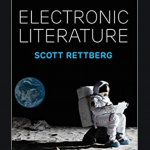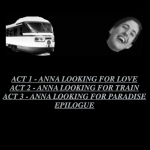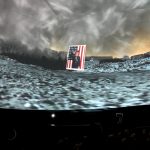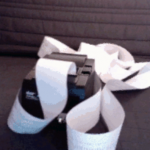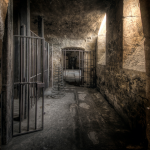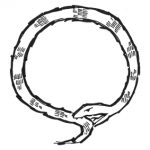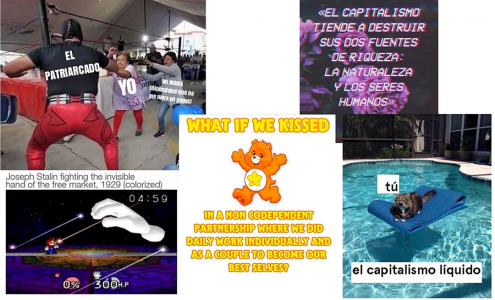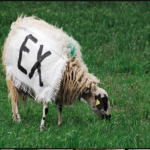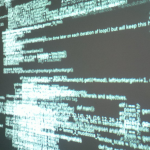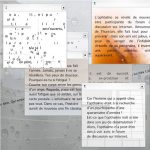2020
Rettberg and Saum introduce a collection of essays, presented at the Summer 2019 [Frame]works conference at the University of California, Berkeley, that bring literary criticism and creativity (equally) to bear on the digital humanities.
In this contribution to her co-edited collection, [Frame]works, Saum brings to the digital humanities both makers and theoreticians, gnosis as well as poiesis, school teachers as well as research professors.
On the database itself as a cultural and textual artifact, a site where reading and interpretation combine with quantitative methods.
Berens asks: Should the e-literature community include third-generation works in collections, syllabi, databases, prizes? A related question: do third-gen makers have a role in “decolonizing” e-literature? Who or what “colonizes” e-lit? E-literature, like earlier avant gardes, began as a coterie and has become a scholarly field. Using the comparison of a field versus a walled garden, the essay examines critiques of e-literature and variations on field definitions. It ends with two ideas about how to "decolonize" e-literature; about how equity and inclusion work in tandem with decolonization, but are not the same thing; and why decolonization efforts are urgent in the context of pandemic and protests supporting Black lives and racial justice.
In the course of her wide ranging review of Scott Rettberg's Electronic Literature, Anna Nacher offers a glimpse into "semi-peripheral avant-gardes" that are more open than other fields of digital culture to decolonization and not restricted to the Anglophone world.
A critique of Third Generation, web based electronic literature from a first generation maker and author of "The Moving Word" (2000), Janez Strehovic. Image from Olia Lialina's Ann Karenin Goes to Paradise
Returning to his 2010 essay, “Electronic Literature as World Literature,” Tabbi extends those arguments in light of community built scholarly databases that have since emerged and in contrast to an uncritical tracking of “views, citations, downloads and occasional shared themes” (not to mention an increased precarity of authorship, where one’s scholarly work is basically given away).
For digital practices to be literary, Tabbi argues, our selections need to circulate within various institutional, academic, curatorial, and cultural structures – each of which is devising its own set of relations to the digital. This essay aims to initiate those ongoing conversations and evaluations in the field of born digital, electronic literature. In so doing, Tabbi suggests how acts of close reading can bring scholars into closer contact with one another and also activate the databases where e-lit archives are presently stored, read, curated, and mined for verbal and perspectival patterns. (Which have been described, in broad outline as a kind of distant reading.)
Circularity, performativity, authorial intervention, digressions, interruptions, collage, segmentation, prolific examples, line breaks and humor: Hazel Smith brings each of these approaches and stances to bear on Charles Bernstein's poetic essays and essayistic poetry. In the spirit of which, Smith presents her own essay in parallel sections. The main column advances her critical argument, while the second discontinuous column presents a "Deep Text" generated by Roger Dean, who applied the computer platform Python to word sequences from Smith's first column. image: Charles Bernstein
Pold and Erslev explore third-wave electronic literature -- a practice situated in ¨social media networks, apps, mobile and touchscreen devices, and Web API services” (Flores). At the next conceptual level, however, literary practices of this kind unavoidably take part in representing and reconstructing the metainterface - a space of data collection, standardization, commodification and redistribution that, for better or worse, is our context for a contemporary data realism.
A look at experimentation with crypto-machinic codes in Star Foster’s and David Ravipinto’s Slouching Towards Bethlehem.
image by flickr artist Art Hakker
Like many of the "Artistic Reflections" featured in the Cork 2019 e-lit conference, Carpenter's opens out from her own web based works to a "post-digital world, in which invisible layers of data inform our daily thoughts and actions; a post-human world, of vast oceans and ceaseless winds."
Torres and Tisseli ask, isn't it ironic how, as we build machines that mimic thought and language in ever more persuasive ways, the very energy that fuels those machines is making us ever more stupid? Further, by resisting the proprietary technologies commonly present in 3rd generation e-literature, the co-authors advance the notion that being peripheral may actually be the role of e-literature.
Alex Saum-Pascual on e-lit's relocation to platforms with massive user bases, and the beauty of meh.
Annie Abrahams reflects on the right classification of her own ... what, exactly? Hypertext work? Net Art, electronic literature, digital art, intermedia art, computer fine arts, internet art, interactive writing experiment, computer art, poetry, flash art, animation, hypermedia, lecture, digital print, performance, opera, sound piece, contemporary art, video art? Rather than settle on tags that were mostly based on technology and didn't say anything about what was experienced through the work, Abrahams now profers a behavioral art that considers human/machine interactions somewhat in the way behavioral science in the 1970s "studied monkey behavior in a cage."
Elaborating on interspecies and translab experimentation. Escaja's interactive digital arts projects reclaim the notion of “transhumant,” a single term for nomadic practices that are shared by both the livestock and its shepherd. Both projects, Negro en ovejas (ovine poem) and Emblem/as, prioritize dislocation and nomadic multiplicity, which constitute a basis for resistance to and reconsideration of monolithic notions and canonical impositions.
Taking his cue from the first line of Lady Mary Wroth’s 17th Century sonnet sequence, “In this strange labyrinth how shall I turn?” Corey Sparks locates readers in a contemporary, procedural sonnet at the intersection of electronic literature, digital edition creation, gaming, and literary poetics. Sparks includes a photo of a reconstructed medieval labyrinth, taken at St. Fin Barre's Cathedral in Cork, Ireland during his attendance at the 2019 Electronic Literature Organization conference.
Christelle Proulx argues that screen captures in art and literature projects introduce three different effects on the representation of online world and its relation to offline world. The spatiotemporal specificities of the images produced are first considered through the photographic as a category of thought, then the importance of location is interrogated via the situated knowledges of Donna Haraway (1988) and concludes on the interface effects of this kind of imaging practice.
The authors speculate why some are bored by the goal of computational generation of "human-like" text. Inspired by Italo Calvino's alternative, minor strain in "Cybernetics and Ghosts," they argue that this kind of text generation provides an opportunity to destabilize as well as refine our sense of the differences between human and machine cognition.
Bouchardon and Mayer in this essay question the narrative model of personal identity – the idea of the self as a story – in light of contemporary forms of electronic literature.
Working with a custom-coded, automated-art-system of their own devising, Australian digital artists Karen Ann Donnachie and Andy Simionato have now archived a literary corpus for future study in what they have called The Library of Nonhuman Books. Yet it remains uncertain whether human scholars will visit Donnachie's and Simoniato's virtual library. Seeing as how "there are no human ‘typewriters’ now, how can we be sure there will still be human ‘readers’ in the future?"




